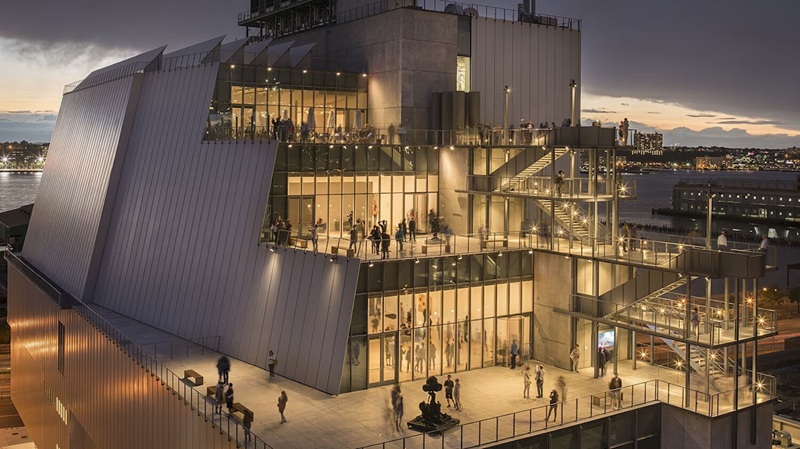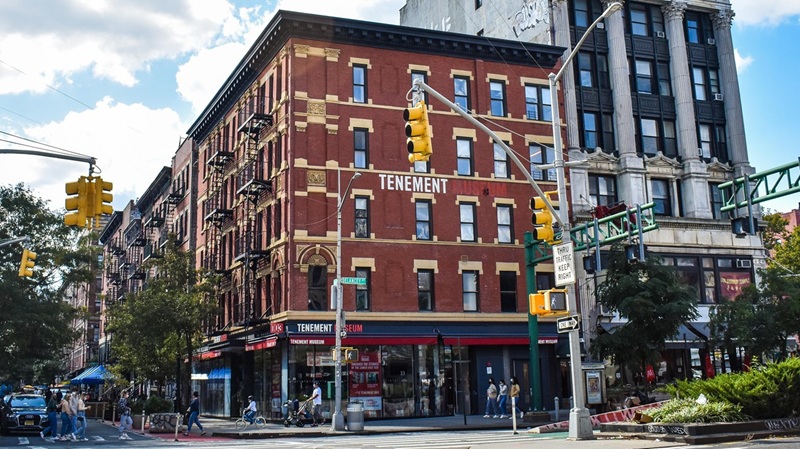
The Whitney Museum of American Art, located in Manhattan’s Meatpacking District, stands as a testament to the vibrant and diverse artistic traditions of the United States. Founded in 1930 by Gertrude Vanderbilt Whitney, a sculptor and prominent art patron, the museum has played a pivotal role in championing American artists, particularly those whose work might otherwise have been overlooked by traditional institutions.
History and Mission
Gertrude Vanderbilt Whitney’s vision for the museum stemmed from her deep commitment to supporting living American artists. Frustrated by the lack of institutional support for contemporary American art, she established the Whitney as a space dedicated to showcasing the works of modern and emerging creators. This mission remains central to the museum’s identity, as it continues to prioritize innovation, experimentation, and the representation of underrecognized voices in art.
Originally located in Greenwich Village, the Whitney moved several times before settling into its current home in 2015, a striking building designed by Renzo Piano. This move to the Meatpacking District signaled a new era for the museum, offering expanded gallery spaces and a prime location adjacent to the High Line.
The Collection
The Whitney boasts an impressive collection of over 25,000 works by more than 3,500 artists, encompassing a wide range of media, including painting, sculpture, photography, video, and installation art. The collection spans the early 20th century to the present, reflecting the dynamic and ever-evolving nature of American art.
Highlights include works by iconic figures such as Edward Hopper, Georgia O’Keeffe, Alexander Calder, and Andy Warhol, alongside pieces by contemporary luminaries like Kara Walker, Cindy Sherman, and Jean-Michel Basquiat. The museum’s commitment to living artists is evident in its acquisitions and exhibitions, which often spotlight emerging talents and underrepresented groups.
The Whitney Biennial
One of the museum’s most celebrated initiatives is the Whitney Biennial, a recurring exhibition that has been held since 1932. This influential showcase serves as a barometer of contemporary art in the United States, highlighting emerging trends, themes, and movements. The Biennial often sparks critical conversations about the state of art and society, making it a cornerstone of the Whitney’s programming.
Architectural Marvel
The Whitney’s current building, designed by renowned architect Renzo Piano, is a masterpiece of modern design. Opened in 2015, the structure features expansive gallery spaces, sweeping views of the Hudson River, and outdoor terraces that integrate seamlessly with the surrounding urban landscape. The building’s design reflects the museum’s dedication to accessibility and innovation, providing an inviting and adaptable space for both art and visitors.
Exhibitions and Programs
The Whitney’s exhibitions are known for their bold and thought-provoking approach. From retrospectives of influential artists to thematic explorations of contemporary issues, the museum’s programming challenges audiences to engage deeply with the art and its context. Recent exhibitions have tackled subjects such as racial identity, environmental crises, and the impact of technology on society.
In addition to its exhibitions, the Whitney offers a range of educational programs, including artist talks, workshops, and family-friendly activities. These initiatives aim to foster a deeper understanding and appreciation of American art among audiences of all ages and backgrounds.
Community and Impact
The Whitney Museum is more than just a repository of art; it is a cultural hub that actively engages with its community. Through partnerships, outreach programs, and collaborations with local artists and organizations, the Whitney ensures that its impact extends beyond its walls.
Conclusion
The Whitney Museum of American Art stands as a beacon of creativity and innovation, celebrating the diversity and dynamism of American artistic expression. By championing contemporary voices and challenging conventional narratives, the Whitney continues to shape the cultural landscape of the United States and inspire future generations of artists and art enthusiasts alike. A visit to this iconic institution is not just an exploration of art but a journey into the heart of American creativity and imagination.

